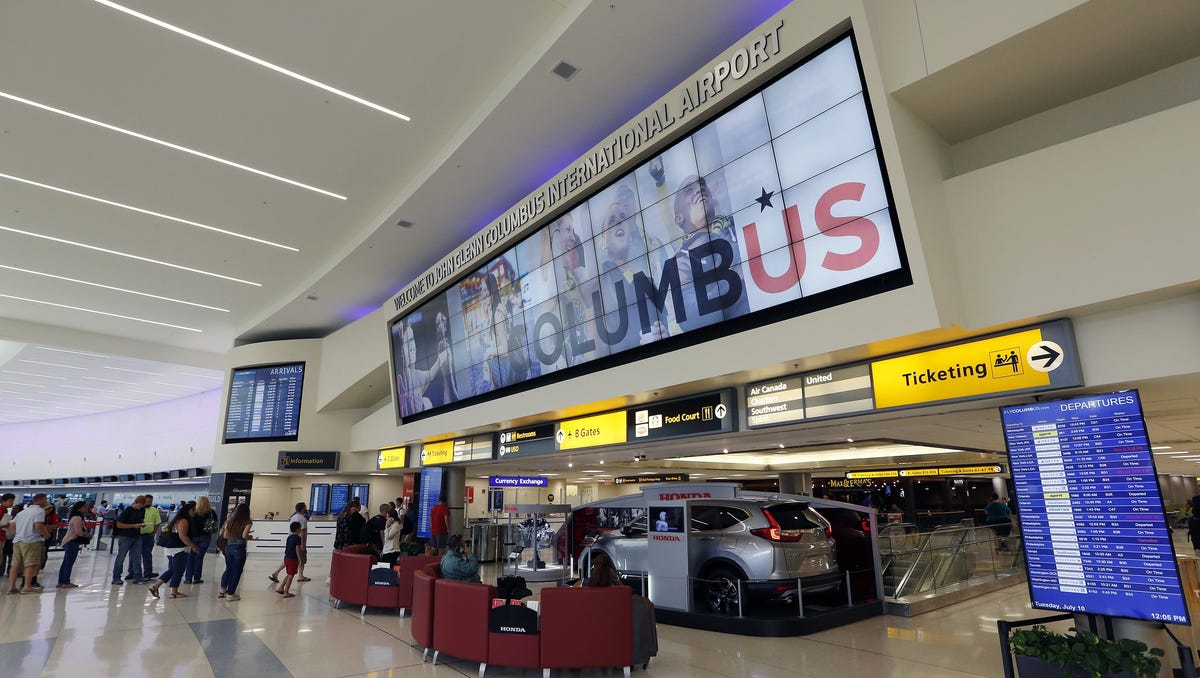Travel
You’re not alone: Why traveling is tiring, even if we’re just sitting | Cruising Altitude

Family travel: How to handle jet lag for you and the kids
There’s no magic formula to erase jet lag, but there are things you can do to ease your family members into a new time zone.
Scott L. Hall, USA TODAY
- Travel can wear us out for a number of reasons, including stress, jet lag and changes in routine.
- Bathroom habits can also be affected by travel.
- There are things you can do to help make travel less tiring, including adjusting your light exposure and activity schedule before you travel.
Travel days are exhausting. Whether you’re crossing multiple time zones in a plane or just driving a few hours to visit a relative, chances are you’ll be sleepy when you get to your destination.
As someone who is ready to take a nap whenever the opportunity presents itself, I always assumed my travel fatigue was personality-related. However, it turns out it happens to just about everyone.
But why? What is it about going from place to place that wears us all down so much? And what can people do to make their trips easier?
I spoke to Dr. Charlene Gamaldo at the Johns Hopkins Center for Sleep and Wellness, and a professor of neurology and vice provost at Johns Hopkins University. She said every body (and every brain) is different, but there are a few universal techniques to make travel easier on yourself.
Why travel wears us out
I travel a lot, but no matter how often I do it, I find myself drowsy when I first get to where I’m going. Gamaldo told me that’s totally normal.
“From a circadian rhythm standpoint, depending on what direction you’re traveling and how many time zones you’re traveling across, that can certainly contribute to you feeling tired,” she said.
Traveling also takes people out of their usual routine, and stress can wear us all out, too.
“There are things that are unrelated to sleep that add to it in terms of the angst about getting your flight, making sure flights aren’t canceled,” Gamaldo said.
It makes sense. I always feel hyper-aware when I’m in an airport, making sure I’m going to the right gate, dodging slow walkers in the terminal and seeking out my traditional water bottle and pretzel purchase at Hudson News before I board. By the time I get on the plane or on the ground at my destination, I’m ready for a rest.
Last week’s Cruising Altitude: Do you love airport lounges? Airlines are stepping it up for you.
Toilet talk
I’ve certainly noticed this myself, and a few of my closest friends have confirmed that our bathroom habits often get thrown off when we travel.
I wasn’t planning to ask about this because I didn’t think it was relevant, but Gamaldo, unprompted, told me that bathroom behavior is also part of the travel fatigue story.
“A big form that folks don’t always appreciate or in retrospect they never made the connection is that GI disruption is probably the most common symptom with jet lag, not even fatigue or a sleep-related issue,” she said. “It’s usually your gut trying to get into this new circadian rhythm.”
Gamaldo said settling your stomach can help your body adjust more quickly overall, and help you feel less tired throughout your journey.
“One of the things that can help with your gut is remaining hydrated,” she said. “It’s really important you get hydrated for fatigue as well to help with your gut mobility.”
How to adjust
Whether your fatigue is caused by stress in the airport, an upset stomach or plain old jet lag, there are things you can do to help make travel less tiring.
First, she said, “it’s really important to reflect back to experiences you’ve had in the past to understand how aggressive you need to be in preparing for jet lag. If your body does have a proclivity to suffering from jet lag, you want to prepare a day for every hour of time change.”
It can also be helpful to get yourself into a routine when you travel. If you have a regular rhythm when it comes to packing, heading to the airport and getting to your gate, it can make the whole experience less stressful and therefore less tiring.
When it comes to regular jet lag, the best techniques for preparing your body clock are adjusting your light exposure and activity schedule before you travel, according to Gamaldo. That can help you be better adjusted throughout your trip, too.
“If you are going to be going two time zones back, you want to try to have your light exposure in the morning two hours earlier and then to turn off the light exposure two hours earlier as well,” she said. “That’s actually the most powerful way to do it along with activity.”
Gamaldo also said it helps to think about what your schedule will be when you arrive to prepare during the trip itself.
“On the plane, if you’re going to be arriving in the morning at your destination, as much as you can, you want to rest or sleep on the plane,” Gamaldo said. “If you’re going to be arriving and it’s close to dinner time you actually, probably want to refrain from eating on the plane if you can and having dinner there and transitioning into sleep.”
Gamaldo also said it’s important to be diligent about giving your body time to adjust, even on short trips, especially if past experience tells you you’re prone to travel fatigue.
“Typically, if people have a short trip, they’re more inclined to do a quicker turnaround,” she said. “That’s a lot to ask your body to do.”
Ultimately, she said, there are no real shortcuts to adjusting. Time, intention and patience are your best tools for combating sleepiness when you travel.
“Things like melatonin can be helpful, but the good old fashioned using light and activity is the most effective way to re-anchor your circadian clock,” Gamaldo said.
Zach Wichter is a travel reporter for USA TODAY based in New York. You can reach him at zwichter@usatoday.com.









